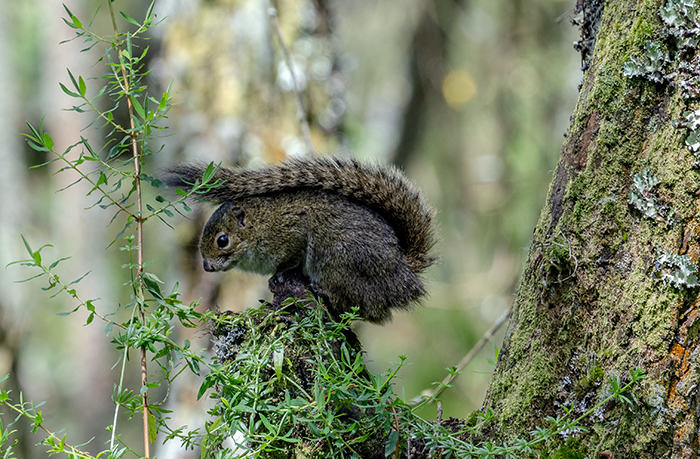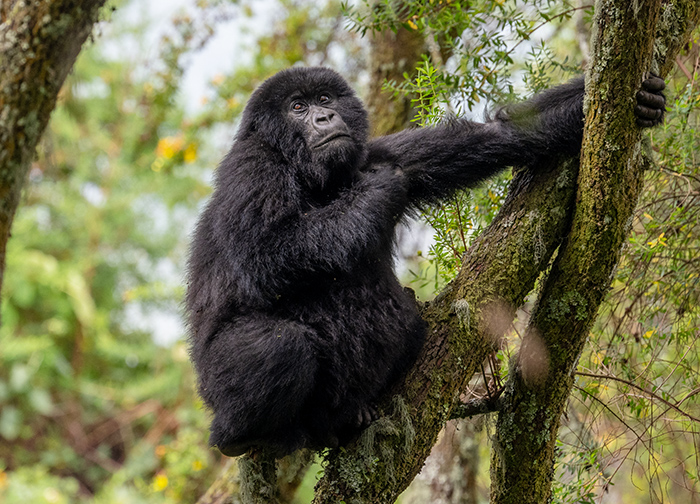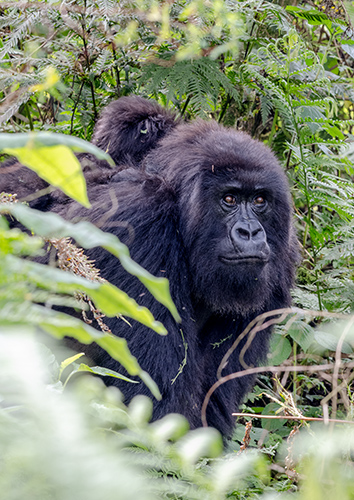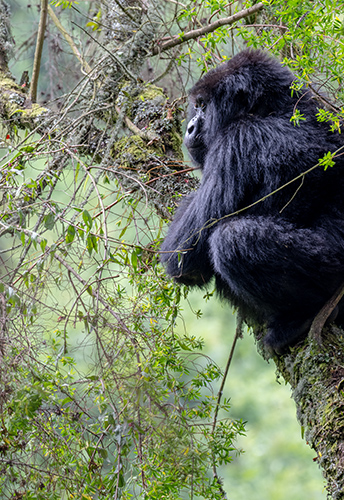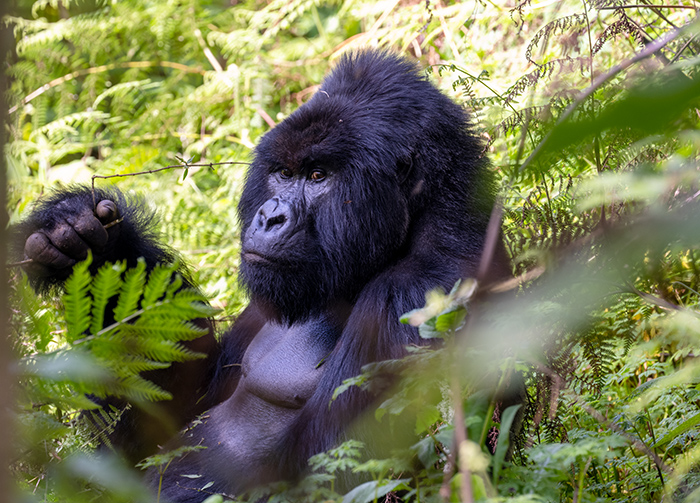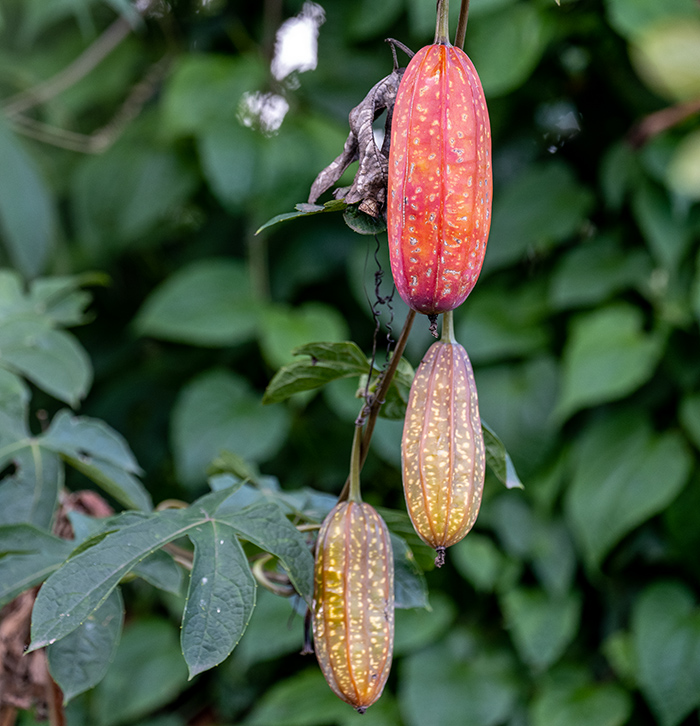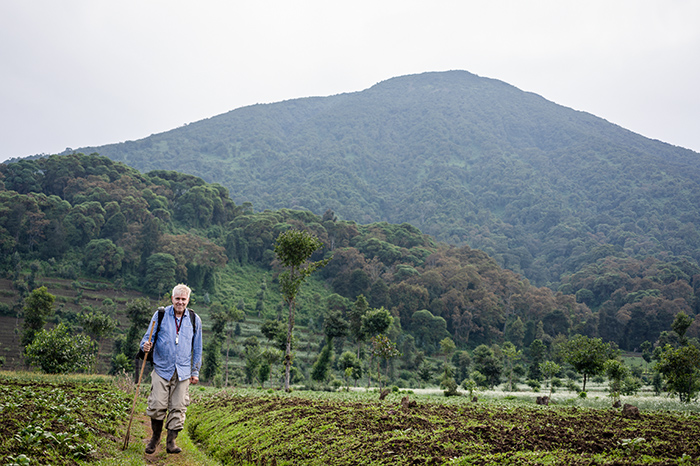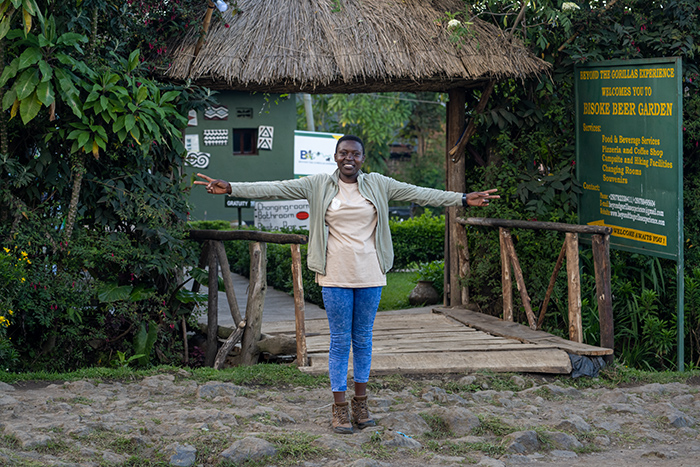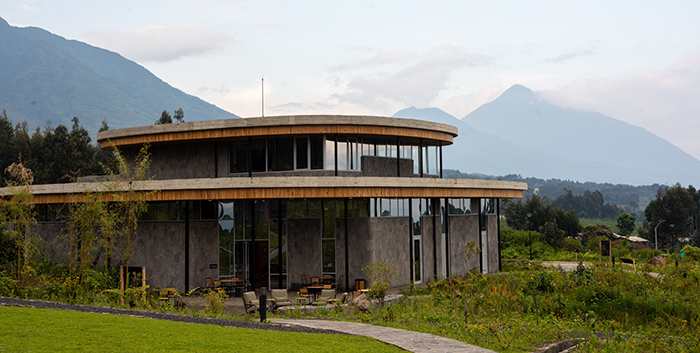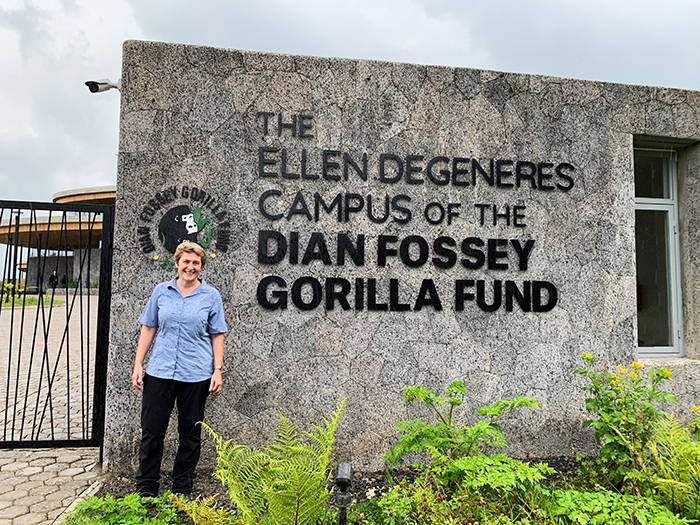We spend the 29th of September in the Volcanoes National Park. Dorothee and Burkhard have decided to visit the mountain gorillas with the Wohlleben family. Eberhard and I want to explore the 3711 meter high volcano Bisoke. We walk with our guide Theo through fields where potatoes and Pyrethrum are grown - the Pyrethrum flowers are used for the production of natural pesticides.

Then we reach the beginning of the national park. A signpost leads us to the explorer trail.
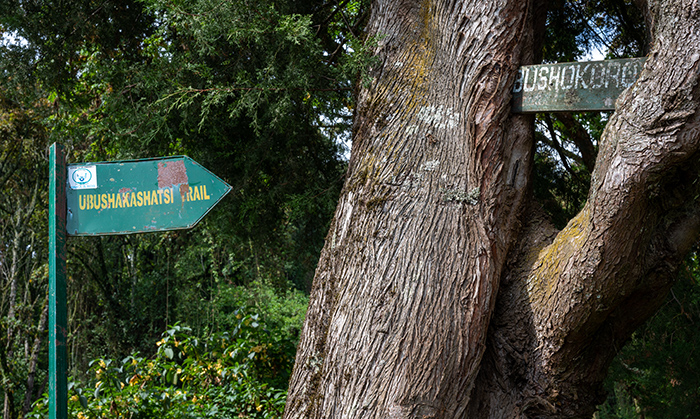
Since it rained heavily the day before, the paths are very muddy. Again and again we slip. It becomes painful when we fall on one of the nasty nettles that line the path. But no pain without nature's antidote! Theo shows me how to apply the milky sap of Lobelia gibberoa to the skin so that the pain quickly subsides.
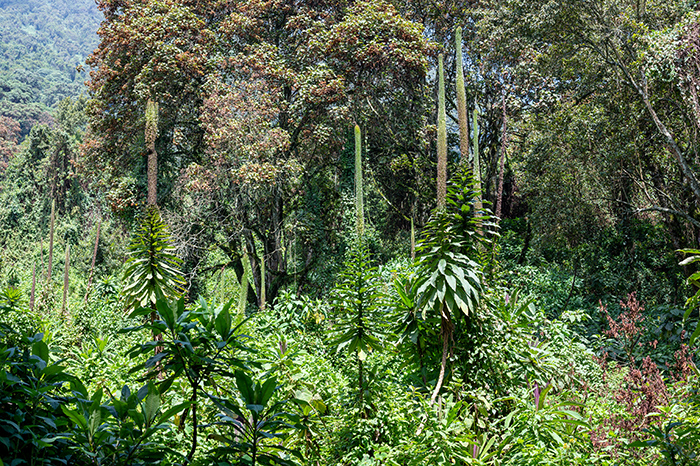
Impatiens burtonii blooms pale purple along the path. And I get to know more and more ferns - Asplenium mildtbraedii with its delicate leaflets and Pteris dentata with light green leaf fronds. On almost every tree grows Pleopeltis macrocarpa, which I already saw a lot in Nyungwe.
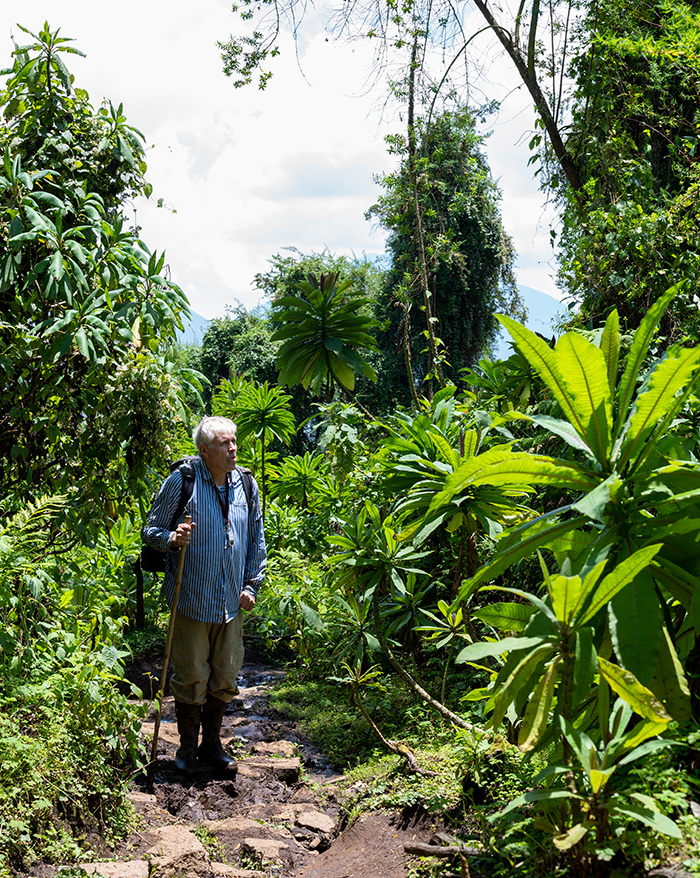
However, we soon realize that we will not make it to the Bisoke summit in one day due to extensive botanizing and especially due to the difficult path. So we take our time now and enjoy the view of Karisimbi (4507 m), the highest of the Virunga volcanoes.
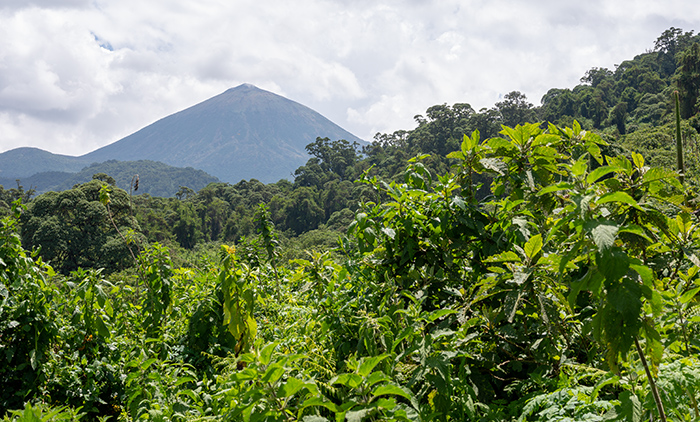 Pink-white flower umbels form the tree Dombeya torrida, which has a wide distribution from eastern Congo to Ethiopia and to South Africa. And together with Hagenia abyssinica, already familiar to me from Nyungwe, Hypericum revolutum forms a characteristic vegetation belt, the Hagenia-Hypericum. I am amazed that this large shrub, growing up to 15 meters high, is related to the European Hypericum perforatum. The yellow flower color, however, is common to both.
Pink-white flower umbels form the tree Dombeya torrida, which has a wide distribution from eastern Congo to Ethiopia and to South Africa. And together with Hagenia abyssinica, already familiar to me from Nyungwe, Hypericum revolutum forms a characteristic vegetation belt, the Hagenia-Hypericum. I am amazed that this large shrub, growing up to 15 meters high, is related to the European Hypericum perforatum. The yellow flower color, however, is common to both.

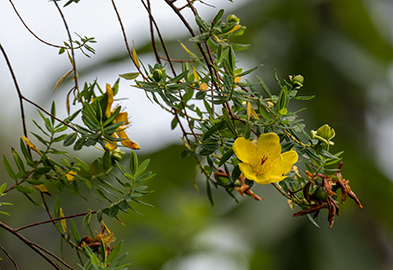
The wild vegetation and the altitude of a good 3000 meters take my breath away. Again and again I look up into the treetops. Even if we do not reach the summit today, I would love to see the red flowering Polystachya kermesina.

With difficulty I climb above the graceful meadow in memory of the gorilla researcher Dian Fossey up a lava field. There I want to look around again and then the descent can begin. Looking down I discover something red at a vertical tree trunk. Since the tree is fully overgrown with lichens, I think first of the fruiting body of a lichen, so small is the structure. But the picture with the telephoto lens shows then but the special orchid!
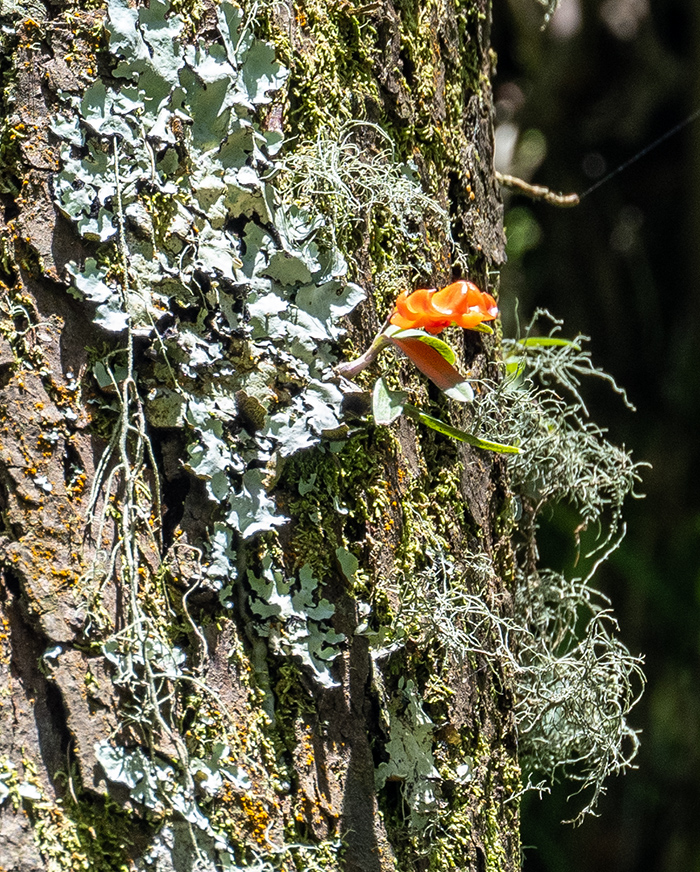

The explorer Friedrich Wilhelm Ludwig Kraenzlin (1847-1934) noted in his description of Polystachya kermesiana: "A small, somewhat shaggy plant, consisting of a dense felt of roots, dead and living stems and leaves, among which are scattered the vividly colored 'lacquer-red' flowers." By Johannes Mildbraed (In: Scientific results of the German Central Africa Expedition, 1907-1908 : led by Adolf Friedrich, Duke of Mecklenburg. Vol. II, p. 75). There is a drawing of the plant:

A study published in 1996 on the epiphytic flora in forests in Rwanda and Congo identified only one orchid for the rainforest in the Volcanoes, Polystachya kermesiana, and attributed the lower species diversity in different plant families to the special altitude. (Biedinger, Nadja/Fischer, Eberhard: Epiphytic vegetation and ecology in Central African forests (Rwanda, Zaïre). In: Ecotropica 2, 1996. p. 121-142).
In the meantime Eberhard has also discovered the fern Asplenium majus we were looking for. We are lucky - according to the description it occurs in the Volcanoes only up from an altitude of 3300 meters. We now see it at about 3000 meters. Eberhard draws my attention to the spore camps on the underside of the leaf fronds.
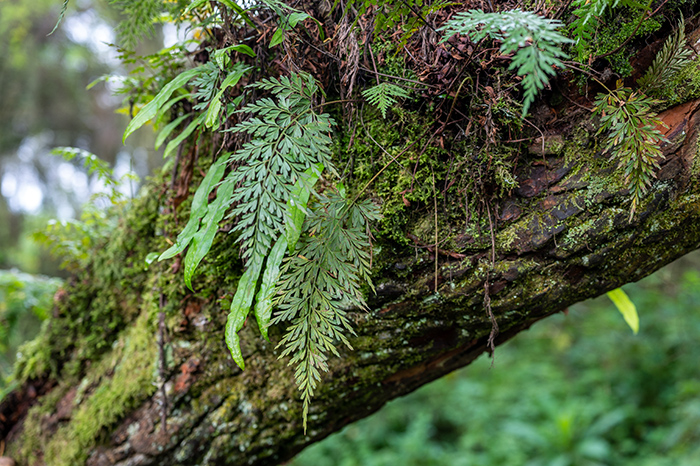
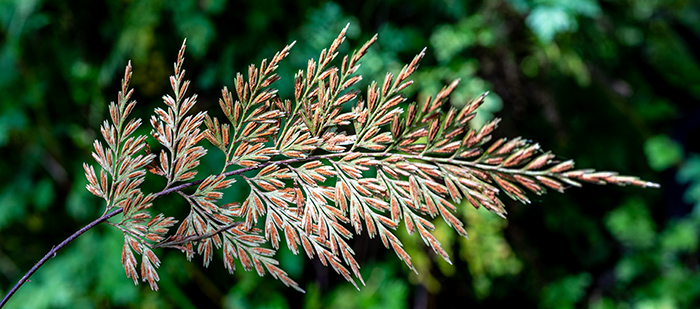
For the descent we then choose another way. Theo draws our attention to a Ruwenzori sun squirrel (Heliosciurus ruwenzorii).
